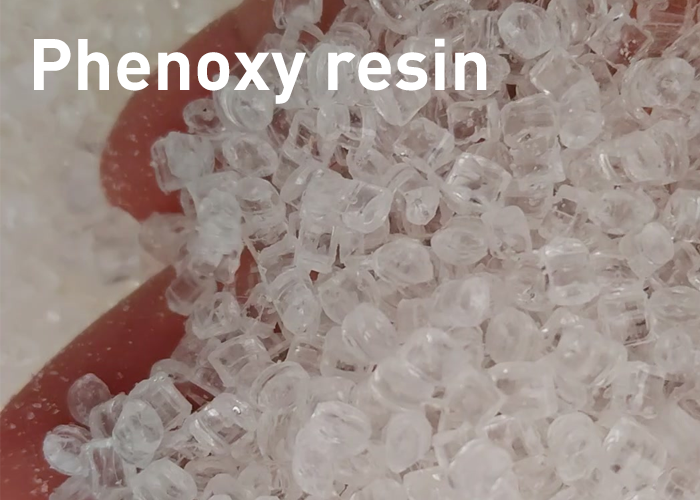What are the characteristics of phenoxy resin?
Phenoxy resin. You may not have heard of this material, but its application is really everywhere, from glue to coatings to composite materials.
Phenoxy resin is actually a thermoplastic macromolecular epoxy resin. Its molecular structure contains a large number of benzene rings, ether bonds and hydroxyl groups, which give phenoxy resin a series of unique physical and chemical properties.
Ether bonds: provide improved flexibility and ductility.
Benzene rings: give the resin rigidity, improve tensile strength, and enhance compatibility with aromatic resins.
Hydroxyl groups: as reaction crosslinking points, improve compatibility with ester bonds, enhance bonding properties and gas barrier properties.
Phenoxy resins are widely used in many fields due to their excellent performance.
• Structural adhesives: Phenoxy resins can improve the bonding properties of various metals, glass, carbon fiber, nylon and PET.
• Coatings: Coatings formulated with phenoxy resins have improved gloss, hardness, softening point and solvent resistance.
• Composite materials: The application of phenoxy resin in high temperature resistant prepreg formulations, despite the processability issues, its potential in the field of composite materials cannot be ignored.
• Electronics and electrical appliances: Due to its excellent electrical insulation and chemical resistance, phenoxy resin is used to manufacture electronic computer parts and electrical instrument parts.
Technical details of phenoxy resin
The technical details of phenoxy resin involve its solubility and performance testing of the curing system:
• Solubility: Phenoxy resin is soluble in alcohol ethers, ketones (such as cyclohexanone, methyl ethyl ketone), THF, NMP, etc., and has good compatibility with a variety of thermoplastic materials such as polyurethane, phenoxy, polycarbonate, etc.
• Curing system performance test: In the curing system of TGDDM and DDS, the fracture toughness K1c of phenoxy resin is increased by about 27%, the interlaminar fracture toughness G1c is increased by nearly 50%, the fracture strain is increased by 50%, and the interlaminar shear strength (ILSS) is increased by nearly 36%.
The phenoxy resin market is developing, with the main supply coming from the United States and Japan, but it is expected that domestic phenoxy resin will appear in the next 1-2 years, which may affect the import volume.
At the same time, innovative applications of phenoxy resin, such as solving its difficult dissolution and high viscosity problems, may bring broader application prospects in the fields of coatings, composites, and adhesives.
With its unique structure and properties, phenoxy resin plays an increasingly important role in the field of chemical materials. With the advancement of technology and the expansion of the market, the application scope of phenoxy resin will be further expanded, and its potential value deserves extensive attention and in-depth research from both inside and outside the industry. This is phenoxy resin, a material that you may not have heard of, but it is definitely not to be underestimated.